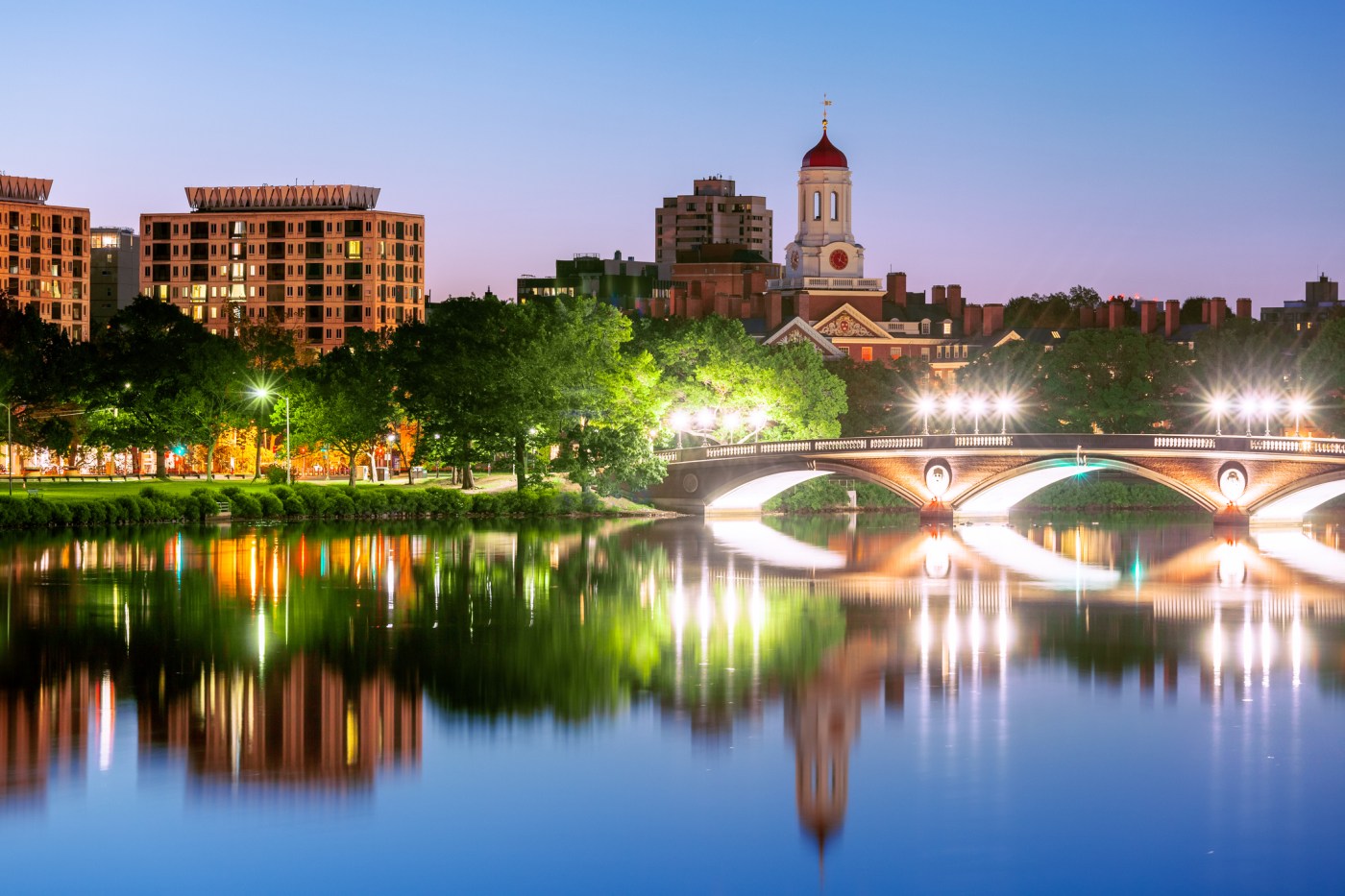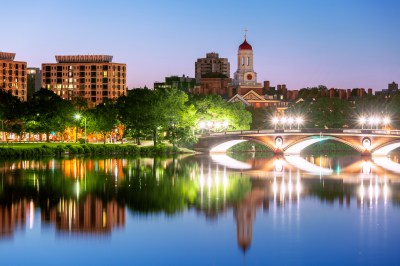Tomorrow morning the Supreme Court will hear oral arguments in the most important case of this term, a case which is arguably among the most important of this new century. It will decide whether schools can continue to discriminate on the basis of race in college admissions.
The Supreme Court should say no. It should say no because the law should compel it to say no. We should cheer that outcome because morality and justice are in harmony with the law. Racial discrimination is in fundamental tension with racial justice, even when racial discrimination is purportedly designed to advance racial justice.
To understand the reasons for this position, we have to understand a few realities about American discrimination. Slavery is rightly called America’s “original sin,” but American racial discrimination didn’t end when slavery did, and it hasn’t been confined to America’s black population. For centuries American law didn’t just permit and protect vicious invidious discrimination, in some jurisdictions it mandated it.
It took 345 years—the time span from 1619 (when African slaves arrived on American shores) until 1964 (when the Civil Rights Act finally comprehensively outlawed race discrimination in the United States)—to end this dreadful legal inequality.
But one can’t simply end discrimination by passing laws against discrimination. One way to think about the Civil Rights Act is that it finally gave marginalized communities the tools they needed to seek justice, and for the last 58 years they’ve been battling back, slowly but surely taking their rightful place in American life.
The moral necessity of ameliorating the effects of centuries of discrimination is clear; the method for doing so is not. But here’s one principle that should guide our nation’s response: The wounds caused by racial discrimination can’t be healed by racial discrimination.
Indeed, when it comes to American education, that is exactly what the plain letter of the law requires. Here’s the text of the Title VI of the Civil Rights Act of 1964, a law that applies to every educational institution in the United States that receives federal funding:
No person in the United States shall, on the ground of race, color, or national origin, be excluded from participation in, be denied the benefits of, or be subjected to discrimination under any program or activity receiving Federal financial assistance.
Clear enough, right? This is the legal mandate to end programs and practices that systematically disadvantaged Americans on the basis of nothing more than the color of their skin. And yet the Supreme Court has rejected that language. It has declared—in cases stretching from 1978’s University of California v. Bakke to 2003’s Grutter v. Bollinger to 2013’s Fisher v. Texas—that universities can take race into account in admissions decisions without violating the Civil Rights Act or the Equal Protection Clause of the Fourteenth Amendment.
They can’t impose strict racial quotas, and they can’t (in theory) use race against any applicant, but they can consider race as one part of an allegedly “holistic” admissions review. The Court has held that there is a “compelling governmental interest” in academic diversity, and racial considerations are one way to advance that interest.
But how has that system worked in practice? As Richard Kahlenberg argued last week in The Atlantic, universities are keeping a “dirty secret.” Racial preferences “provide cover for an admissions system that mostly benefits the wealthy.” In other words, the universities preserve a longstanding status quo that privileges those individuals—legacy admittees and children of donors, for example—who preserve the university’s wealth and power while using race preferences as a blunt instrument to render universities “diverse” along racial lines only.
Here’s how the system works. Elite universities attempt to accomplish multiple goals at the same time. They want to maintain the community and financial benefits of legacy admissions and donor favoritism. They also want to maintain the high class GPA and SAT scores that are the foundations of college rankings. And they want their incoming classes to “look like America.”
The result—especially in elite academic circles—is extraordinarily pernicious. Favoritism for legacy admittees and donors’ kids can result in classes that are both disproportionately wealthy and drawn from a relatively small ideological and religious slice of American life. Yet race consciousness creates clear academic double standards on the basis of race alone.
Harvard’s practices are particularly egregious. As Students for Fair Admission (SFFA) noted in their Supreme Court brief, “Harvard’s racial preferences are enormous.” In “absolute terms,” SFFA observed, “race is ‘determinative’ for at least ‘45% of all admitted African American and Hispanic applicants,’ or ‘nearly 1,000 students’ over a four-year period.”
But Harvard’s affirmative action plan didn’t involve merely boosting black and Hispanic applicants. To get the numbers Harvard wanted, it had to penalize another racial group—Asians.
Harvard’s method was deeply disturbing. It systematically down-ranked Asian-American applicants’ “personal rating.” Again, here’s SFFA:
Asian-American applicants should be admitted at a higher rate than whites. They are substantially stronger than white applicants on nearly every measure of academic achievement, including SAT scores, GPA, and the academic rating. They perform better on the extracurricular rating and in alumni interviews. And they perform similarly on nearly every other rating that matters. (Citations omitted).
Yet non-ALDC Asian applicants (ALDC refers to athletes, legacy admittees, donors’ children, and children of faculty and staff) “were admitted at the same rate as non-ALDC white applicants.”
The reason is the personal rating. At Harvard, the personal rating refers to “highly subjective qualities like ‘integrity,’ ‘courage,’ ‘kindness,’ and ‘empathy.’” Here’s where the story gets worse:
Although these personal qualities have nothing to do with race, Asian Americans receive by far the worst scores. Nor are those scores an innocent coincidence. The district court found “a statistically significant and negative relationship between Asian American identity and the personal rating assigned by Harvard admissions officers.”
Think of how this works in real life. You’ve worked your entire life to get into your dream school. You know that gaining admission helps guarantee an extraordinary amount of economic opportunity and cultural prestige. But you’re stymied not because of your test scores, your extracurricular activities, or any other objective measurement. Instead, like your other Asian classmates, you’re deemed to lack “courage” or “kindness.”
The assignment of negative personal characteristics on the basis of race is what invidious discrimination looks like. It’s what the Civil Rights Act was designed to combat.
What can be done? If you, like me, believe that the American government and its institutions should be committed to racial justice, what is the solution?
First, we have to understand that racial discrimination—regardless of motive—is unjust. It violates the great aspiration of our founding, the goal of establishing a government that recognizes that “all men are created equal.” It violates the legal mandate of the Fourteenth Amendment, which requires “equal protection of the laws.” And it violates the clear language of federal law, which flatly and clearly prohibits “discrimination” on the basis of “race, color, and national origin.”
It’s not just unjust, it’s inherently divisive. The idea that members of different races should be held to different standards can’t help but generate both deep resentment and perverse outcomes. Think of the perversity of the Harvard plan—it disadvantages a historically marginalized Asian community and continues to privilege the most privileged class of Americans in the nation’s history, wealthy whites.
Second, given that race discrimination is inherently unjust, we should instead reach for race-neutral methods of ameliorating race-disproportionate disadvantages. Kahlenberg, an expert witness in the Harvard litigation, is one of the nation’s foremost advocates of a different form of admissions preference—preference on the basis of class, not race.
Why does this matter? Centuries of racial discrimination have left black Americans and other historically-marginalized groups with disproportionate economic and educational disadvantages, but not with exclusive economic and educational disadvantages. There are poor and disadvantaged Americans of all races, and systems that privilege, say, a wealthy black or Hispanic student over a poor white student both fail to recognize the real adversity faced by poor students of any race and diminish the true diversity of the incoming class.
Earlier in this essay, I quoted Kahlenberg’s contention that race preferences “provide cover for an admissions system that mostly benefits the wealthy.” Let’s make this concrete. The student bodies of many of America’s most elite universities are remarkably rich. In 2017, the New York Times published data showing that dozens of America’s most elite schools have more students from the top one percent of American families (by income) than they do from the bottom 60 percent.
The worst school by this measure was Washington University of Saint Louis. An incredible 21.7 percent of its students came from the top one percent. Only 6.1 percent came from the bottom 60. Even a school like Harvard—which was “only” the 62nd-worst school in the country by this measure—had 15.1 percent of its students in the top one percent and a mere 20.4 percent in the bottom 60.
Expanding the data, you can see the enormous advantage of wealth. This chart was sobering:
It’s true that a good education can lead to self-perpetuating, multi-generational good outcomes for families. When education is part of a family’s ethos, that family will generate disproportionately better students. But wealth also creates other advantages as well—tutors, private schools, and testing help (including disability accommodations) can provide a significant academic boost.
Thus, better scores aren’t always evidence of better academic aptitude, but rather superior academic opportunities. But that’s not the entire story. Even when poorer students do as well as rich students, they often don’t even think to apply to elite schools. In his expert report in the Harvard litigation, Kahlenberg cites some rather interesting statistics:
Looking at very high achieving students (SAT scores of 1450 and higher), nearly half (43%) of those students from families making more than $100,000 applied to become members of the Harvard class of 2009. By contrast, less than a quarter of those very high test scorers making less than $100,000 applied.
Aggressive outreach can help close that gap, but rather than extend a wide net, Harvard “relies heavily on a relatively small number of “feeder” schools to fill a significant part of its class.” Again, the statistics are fascinating: “For the classes of 2007-2016, 20.3% of matriculates and 12.9% of applicants came from schools that represent just 0.6% of American high schools.”
If schools truly want to prioritize diversity, they should focus on class. Fostering greater class-based diversity can help achieve greater diversity across the board: More racial diversity, more economic diversity, more ideological diversity, and more diversity on the basis of religion.
Emphasizing diversity of class doesn’t just create a student body that looks like America. It creates a student body that is like America.
Third, we need to dismantle legacy preferences that perpetuate historical disparities. I’ve said this before, and I’ll say it again—one way to understand the lingering effects of racism is by understanding that systems and structures designed by racists for racist reasons are often maintained by nonracists for nonracist reasons.
Classic examples including residential segregation maintained by draconian zoning rules designed to combat density and maintain home values, or de facto nepotism-based hiring preferences which may be motivated by familiarity and love yet perpetuate disparities established by discrimination.
And what are legacy preferences and preferences for children of faculty and staff but a form of nepotism? They’re a form of unearned privilege, and while the motivations are understandable—there are strong reasons to bind communities together across generations—when legacy admissions are part of the fruit of the poisonous tree of past discrimination, then legacy admissions help preserve the effects of previous injustice.
So what happens if Harvard ends unearned legacy privileges and stops discriminating on the basis of race? Again, here’s Kahlenberg:
In red and blue states alike, therefore, colleges that cannot employ race-based preferences have increased financial-aid budgets, taken top-ranking students from high schools in poor communities, dropped the use of legacy preferences, and increased admission of students who transfer from community colleges. Without using race, UC Berkeley and UCLA—which, among the top 25 national universities as ranked by U.S. News & World Report, consistently have the highest percentage of students who receive federal Pell Grants—in 2021 admitted their most racially diverse classes in more than 30 years.
Harvard can achieve the same thing without meaningfully sacrificing academic standards. If the school “eliminated race-based and legacy preferences while giving low-income students half of the boost it gives to recruited athletes, its mean SAT score would drop from the 99th percentile to the 98th.” That’s hardly a material decline.
If the Supreme Court strikes down Harvard’s admissions standards and finally rules that Title VI means what it so plainly says, Harvard would still be Harvard—an extraordinarily elite institution with high academic standards and a history unmatched by an American university—but it would be a more just place, ultimately a more truly diverse place, and American law would finally live up to its clear language and noble ideals.
I don’t hate Harvard University. I actually love the place. I don’t just value my Harvard law degree, I deeply value my experience in Cambridge. The school has a proud legacy. Just this week I visited with my daughter Camille, and we walked through my favorite building on campus, Memorial Hall. It’s a beautiful structure, built to honor those Harvard classmates who died in the fight to abolish slavery and preserve the Union.
In a great central chamber illuminated by sunlight spilling through stained glass, you can read the names of the fallen, along with the places they fell—places that echo in American history. Gettysburg. Antietam. The Wilderness. Bull Run. Harvard is right to be proud of that sacrifice. It’s right to honor their memory.
Harvard has a better story than many American institutions, but it wasn’t a perfect story then, and it’s not a perfect story now. It has an institutional responsibility to end racial discrimination, and if it won’t do it voluntarily, then it’s up to the Court to compel compliance with the clear commands of American law. We will never achieve racial justice so long as racial discrimination is still allowed in our land.
One more thing …
As many readers know, my friend and colleague Jonah Goldberg lost his mom this week. His mother, Lucianne, was a remarkable woman, and Jonah wrote the kind of tribute that only Jonah could write. It’s beautiful. If you haven’t read it yet, please read it now.
One last thing …
I grew up in the a capella churches of Christ, a restorationist Christian movement that’s centered mainly in the American Southeast. While there are many aspects of the church’s theology I ultimately disagreed with, there was much to love about my church and my childhood. For one thing, our status as a rather small Christian minority movement inoculated me against claims that Christians were somehow destined to rule.
For another, I’ve always appreciated a capella music, and there is no song I loved more than what we just called “728b”, after its number in the Songs of the Church hymnal. You can even buy a 728b t-shirt on Amazon. Its actual title is “Our God, He Is Alive,” and here it is, beautifully sung by one person singing all four parts. Enjoy:







Please note that we at The Dispatch hold ourselves, our work, and our commenters to a higher standard than other places on the internet. We welcome comments that foster genuine debate or discussion—including comments critical of us or our work—but responses that include ad hominem attacks on fellow Dispatch members or are intended to stoke fear and anger may be moderated.
With your membership, you only have the ability to comment on The Morning Dispatch articles. Consider upgrading to join the conversation everywhere.